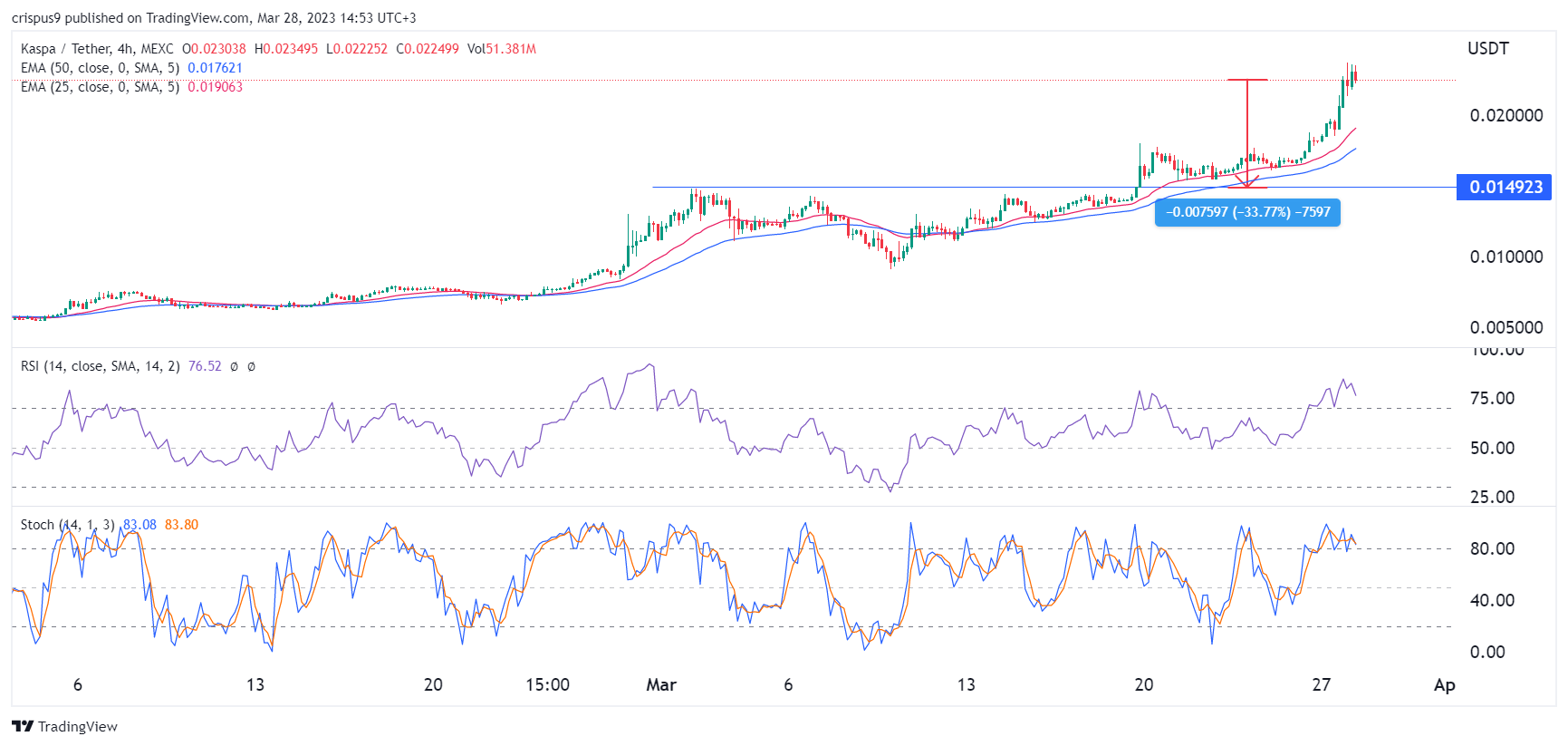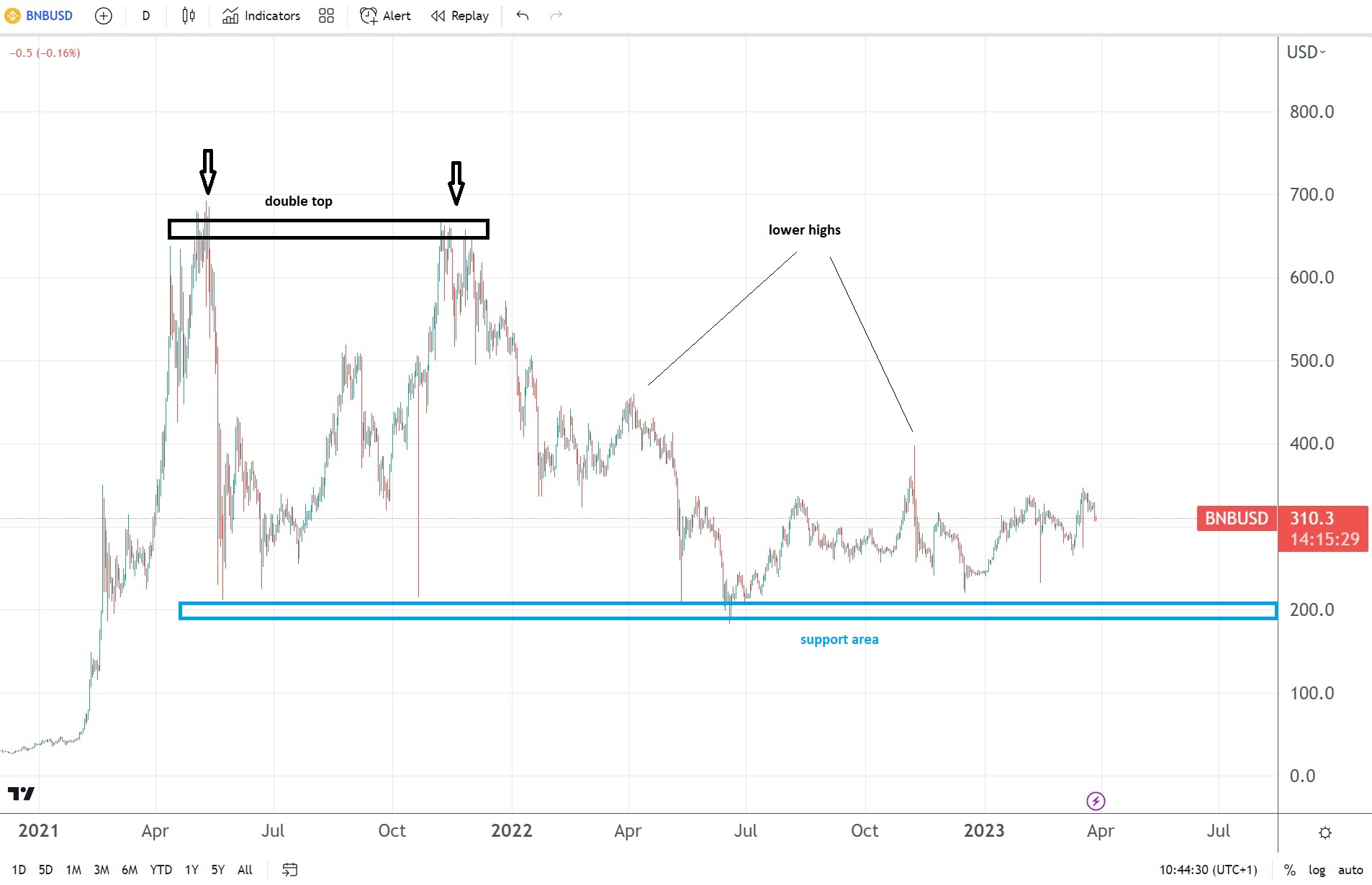Key Takeaways
- $23.6 billion of stablecoins are currently on exchanges, the least since October 2021
- 45% of stablecoins have fled exchanges in the last four months
- 61% of USDC has left exchanges in the three weeks since Silicon Valley Bank’s collapse, while 50% of BUSD has evaporated since regulators announced it was to shut down
- Trend in falling supply of stablecoins has been ongoing since FTX collapsed in November, but has worsened recently
- Capital is flowing into T-bills, with 5 times the amount of treasury accounts created last year as 2021
- Bitcoin’s falling price and volumes are more extreme, but liquidity has been siphoned out of the markets at large due to rising interest rates
- Federal Reserve is now caught between rock and a hard place, as rising interest rates needed to combat inflation but banking sector wobbles may force its hand
It’s always turbulent in the crypto markets.
The waters have been particularly choppy recently with regard to the stablecoin market. There are currently less stablecoins on crypto exchanges than at any point since October 2021.
But where is all the money going? Into Bitcoin? Hidden away in cold wallets? Away from crypto altogether?
In this piece, we dig into the data to try to ascertain where exactly the money is moving, and why, as well as what it means for Bitcoin and how it all ties back to the Federal Reserve.
The flight of stablecoins
First things first. Stablecoins are fleeing exchanges at an unprecedented speed. In less than four months, 45% of stablecoins have left exchanges. That is a drawdown from $43.1 billion to $23.6 billion, a pace that has never been seen before.
The chart shows a clear downward trajectory since the implosion of FTX in November 2022 – with the pace picking up since the turn of the year.
In the next chart, we focus on the outflows alone, helping us to zone in on the speed of these movementts and how they compares to previous periods of outflows.
We can see that in terms of precedent, we saw big spikes in outflows in May 2022 (when LUNA collapsed) and May 2021 (when Bitcoin freefall down from $58K to $37K in a week, despite no obvious trigger). But the difference this time is that the elevated pace of withdrawals has continued for a much longer time period, at four months and counting.
Perhaps layering in price gives more of an indication as to what is happening. In this next chart, we can see big drawdowns in Bitcoin price have coincided with large amounts of stablecoin withdrawals.
But it brings us to an interesting crossroads: this time seems different. As while FTX kicked off a Bitcoin drawdown to $15,500 from $20,000 in November, since then Bitcoin has increased 80%, back up towards $28,000. And yet, the stablecoin balance has continued downward.
BinanceUSD and UCD Coin run into problems, but Tether drained too
So why is this time different? Why are withdrawals of stablecoins remaining elevated while Bitcoin surges?
Well, the events around Binance USD and USD Coin are the most glaring. It was announced last month that Binance USD is shutting down due to US securities law (deep dive on that circus here). At the time, the stablecoin had a market cap of over $14 billion, the third biggest behind USDC and USDT.
In the words of CEO Changpeng Zhao, the developments meant that BUSD will slowly decline to zero.
3/ As a result, BUSD market cap will only decrease over time.
— CZ 🔶 Binance (@cz_binance) February 13, 2023
And that is what has started. 17% of BUSD was immediately pulled from exchanges in the days after the announcement. Today, the supply of BUSD on exchanges is 7.2 billion, 50% below the number upon announcement of the lawsuit.
But there is more here beyond the impact of BUSD’s regulatory-driven fall. Firstly, BUSD’s supply had been falling since the FTX debacle, when there was $22 billion on exchanges, as the above chart shows.
But there is also the case of USD Coin, the stablecoin issued by Circle, who kept 8.25% of the backing reserves in the felled Silicon Valley Bank. While deposits were since guaranteed by the US administration, the episode shook the market and sparked outflows that have not reversed.
On March 10th, as the SVB trouble and hence concern around USDC’s reserves came to light, there was $6.65 billion of USDC on exchanges. Today, less than three weeks later, there is $2.57 billion, a fall of 61% – completely wiping out the increase in the USDC supply on exchanges that had happened in the aftermath of the BUSD shutdown.
Which brings us to the third member of the three musketeers, Tether. Has the number one stablecoin hoovered (hoover means vacuum, for all you American readers) all the BUSD and USDC supply? Well, no.
As the world popped champagne on New Year’s Eve, there was $17.81 billion of Tether on exchanges. Today, on March 27th, there is $13.55 billion, a decline of 24%.
Putting the balance of all three stablecoins on one chart, the below can be seen – clearly, Tether has the lion’s share, but the balance of stablecoins across the board has evaporated.
“There is a lot of talk about Tether’s rise in market share”, said Max Coupland, director of CoinJournal. “That is a story in and of itself, but to us, the greater effect is the remarkable drawdown in the stablecoin market at large. Tether may have gained market share, but to see an evaporation of 24% of the USDT balance on exchanges is notable – and that it has gained market share despite this drawdown hammers home how stark the capital flight out of the entire space has been”.
Where is it all going?
So, the natural question is then, where the f**k is all the money going?
Since the start of the year, Bitcoin is up 64%, adding $209 billion to its market cap while climbing from $16,500 to $27,000. So are people just sending all their stablecoins from exchanges into Bitcoin?
That is a difficult question to answer. Looking at the stablecoin supply ratio (SSR), which is the ratio of the Bitcoin supply to the supply of stablecoins, shows that it has risen significantly in the last few months (it had previously done the exact opposite).
But this doesn’t necessarily mean that stablecoins are flowing into Bitcoin, and concluding that feels like a reach.
In all likelihood, it simply means that the Bitcoin markets are becoming less liquid as capital is leaving the entire space. This would help explain why the move up this year has been so violent, as less buying power has been needed to move the dial.
Treasury market holds the answer to the riddle
But let us not forget about where interest rates are right now. 6-month US treasury bills are currently paying close to 5% currently, 3-Month yields are at 4.6%. It’s starting to make a little more sense why there is less money in crypto right now, isn’t it?
In fact, looking at TreasuryDirect.gov, the website where government bonds can be bought, there were 3.6 million accounts created in 2022 as interest rates surged – that is a five-fold increase from the previous year. And extrapolating the accounts created from the first ten weeks of the year, we are on track to see another 1.1 million created in 2023 (although the Federal Reserve’s updated plans may change that). .
This is what the Federal Reserve wants
And this allows us to circle back to the very crux of the issue. Why is the Federal Reserve raising interest rates in the first place?
The Fed has been raising rates to combat inflation which spiralled far quicker than they imagined. And it wasn’t only the pace, but it was the stickiness of the price rises – the “transient” dream pedalled was nothing more than that, a dream.
In order to topple that inflation, liquidity needed to be siphoned out of the system. Which, as this piece has demonstrated, is exactly what has happened. Bitcoin is a more volatile and thinner asset than other financial markets, which is why the effect has been so dramatic, but we have seen the price of risk assets freefall across the board over the last year.
In conclusion, there is nothing surprising about Bitcoin’s collapse in price, nor the flight from the capital market, when viewed in hindsight against the backdrop of the crippling rise in interest rates.
Of course, hindsight is everything, and investors were caught off guard badly here. Now, as the banking sector wobbles under the weight of these rising interest rates, the Federal Reserve is caught in between a rock and a hard place; it can stop raising rates and be the central bank that failed on the all-important inflation mandate, or it can raise rates further to battle inflation while risking more chaos in the banking sector.
The market is betting on the latter, that the Fed will move to softer monetary policy, which is why we have seen a rebound in the Bitcoin price. This has been exacerbated by the thin liquidity in the markets.
If a hawkish tone comes out of the Fed in future however, or the market’s confidence in a pivot drains, you can bet your bottom dollar that Bitcoin’s gains thus far in 2023 will be halted, if not reversed. Whatever happens, it certainly feels like the market and economy is currently at an inflection point.
If you use our data, then we would appreciate a link back to https://coinjournal.net. Crediting our work with a link helps us to keep providing you with data analysis research.
The post 45% of stablecoin balance has left crypto exchanges in 4 months, but where has all the money gone? – A Deep Dive appeared first on CoinJournal.


